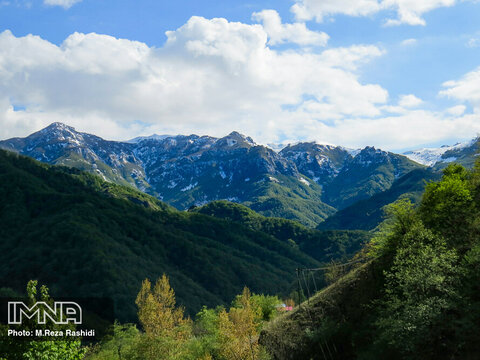Iran (IMNA) - In 2019, Iran's Hyrcanian Forests received UNESCO designation during the 43rd session of the World Heritage Committee. This recognition makes it the second natural site in Iran to be granted this status, following the Lut Desert in 2016.
The Hyrcanian (Hirkan) Forests form a continuous stretch of deciduous mixed broad-leaved forests that span approximately 850 kilometers along the Caspian Sea. Starting from the Talish Mountains in Azerbaijan and extending across the Alborz Mountains to Iran's Golestan province, these forests create a green arc of natural beauty.
The Talish and Alborz mountain systems play a crucial role in regulating the climate and acting as a watershed between the Caspian Sea and the arid Irano-Turanian Plateau. The steep ridges of these mountains act as a barrier to the moist air from the Caspian Sea, resulting in abundant precipitation that feeds numerous rivers and creeks. These water sources flow rapidly down steep slopes and mountain gorges, eventually reaching the Caspian Sea. Therefore, the Hirkan Forests, also known as "Caspian Forests," are situated between the "claws" of the Caspian Sea and the drylands, symbolically representing the delicate balance between these contrasting environments.
UNESCO recognizes the Hyrcanian Forests as vital habitats for the conservation of biological diversity. They are home to threatened species of exceptional scientific and conservation value. Additionally, these forests showcase remarkable natural phenomena and possess areas of exceptional beauty and aesthetic significance.


Your Comment